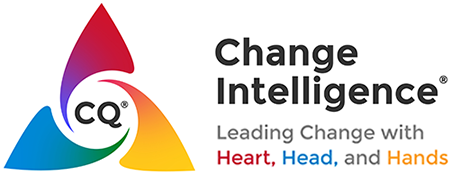Taking a step back, we are all painfully aware of the extremely high (70% or more) failure rate of major organizational change, which underscores a desperate need to improve our capacity to lead successful and sustainable change. Many leaders have taken training programs designed to build their skills and abilities, but struggle to transfer their learnings to the workplace. While traditional classroom training can be designed and delivered with excellence, it cannot get us over that finish line. Across industries and around the world we have an urgent and compelling need for innovative learning solutions to enable leaders to apply and integrate new knowledge, skills, and behaviors – now.Familiar with this scenario, Gerri created a unique approach to change management and leadership training by combining two teaching tools: the Change Intelligence System and horses. Yes, horses. Instead of simply learning about concepts “from the neck up,” participants viscerally experience change dynamics in action – using horses as learning partners! Horses are incredible survival animals that have learned to quickly assess their environment, offering vistas into how we partner with others during change. Through specially designed interactions emphasizing teachings from the CQ System, the horses are able to use this keen instinct to provide an immediate reflection of an individual’s behavior providing them personal feedback – in the moment. This invaluable information directly applies to leading change initiatives back in the workplace.
Gerri explains, “Horses make great learning partners because they respond best to non-confrontational, rational, confident leadership. A partnership exists between the human and the horse, but the human must be the leader. When I learned to train horses, I realized the horse was also training me. I learned to think, ‘Okay, Gerri, what are you doing that’s not clear?’”
In Gerri’s approach, a leader or an entire team first takes the CQ Assessment to discover their change leadership style, which gives participants a way to identify and talk about the strengths that make the team more effective as a whole and as individual leaders. Then, through their work with horses, participants realize the importance of leading change by engaging the heart, inspiring the head, and helping the hands.
Here is an “aha” moment described by a workshop participant, when her team was asked to pick one of two horses for an exercise. She says, “Most of us were identified as Adapters by the CQ Assessment. It didn’t really matter to us which horse we chose. But one of the team, someone I always felt had shown a big heart, was identified as a Coach. And that person asked, ‘How will the other horse feel about not being picked?’ That hadn’t occurred to any of us.”
Not only did the participants learn more about themselves as change leaders, but they were able to immediately apply their learnings back in the workplace. She says, “I’ve seen changes in my team members, too. One person was struggling to connect with a new physician all year. After the coaching, she let him be involved in her decision to hire someone, even though she didn’t have to. It turned their relationship around. It was all about taking the time to include the other person, asking ‘how does he feel about being left out?’”
So many leaders “get” the theory of how to lead change – and yet recognize there is a gap between their understanding and their ability to apply their knowledge real-time on-the-job. That’s the beauty of Gerri’s combined CQ-equine experience – leaders learn to bridge the gap between information and application, in a way that achieves immediate and measurable benefits for themselves, their teams, and their organizations.
